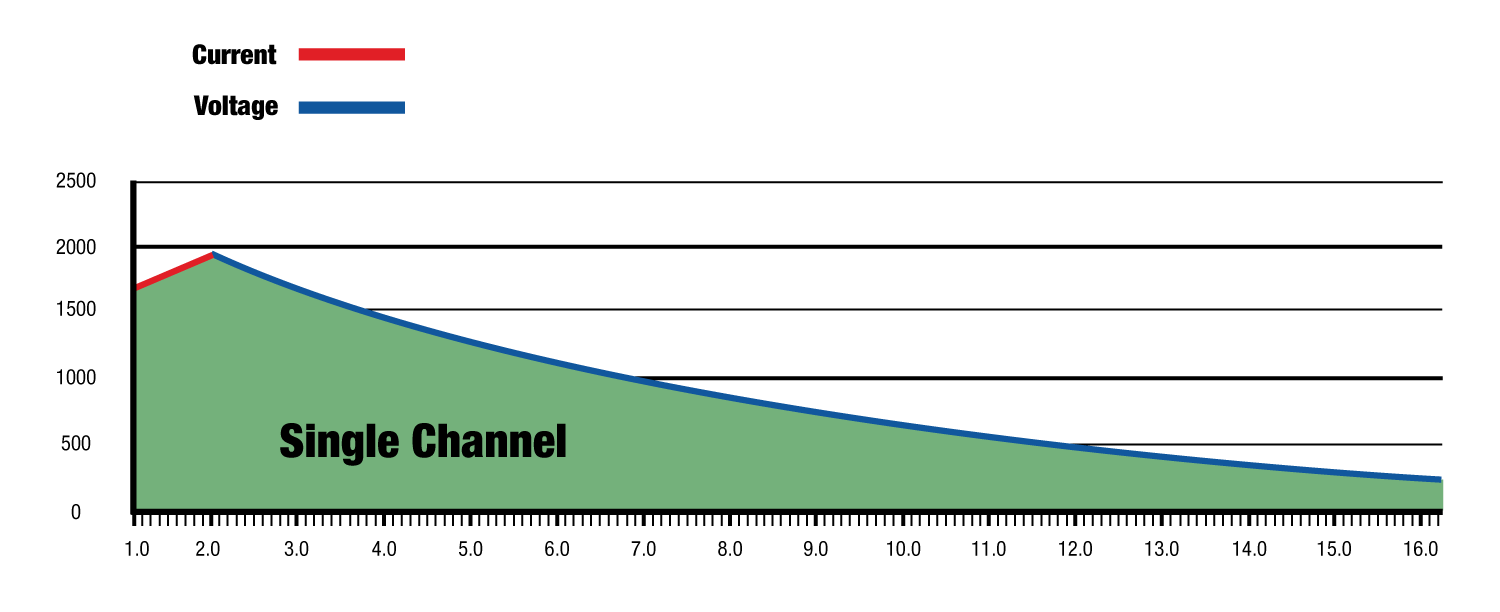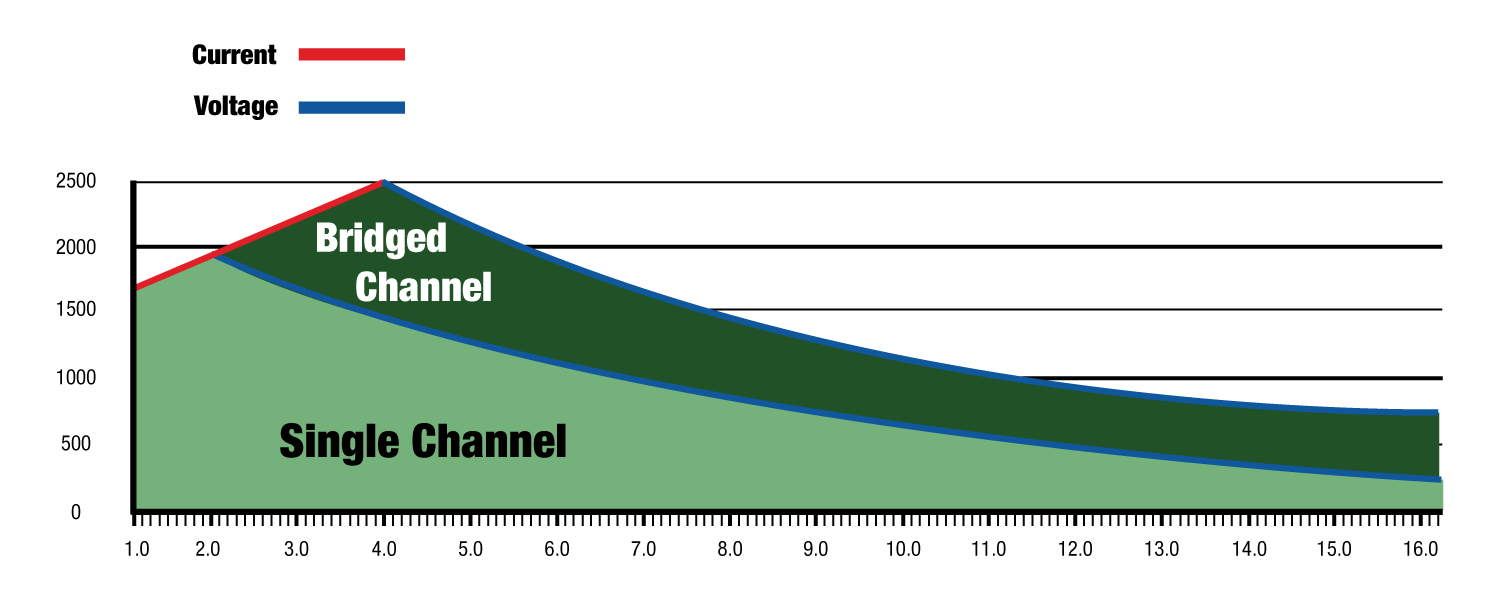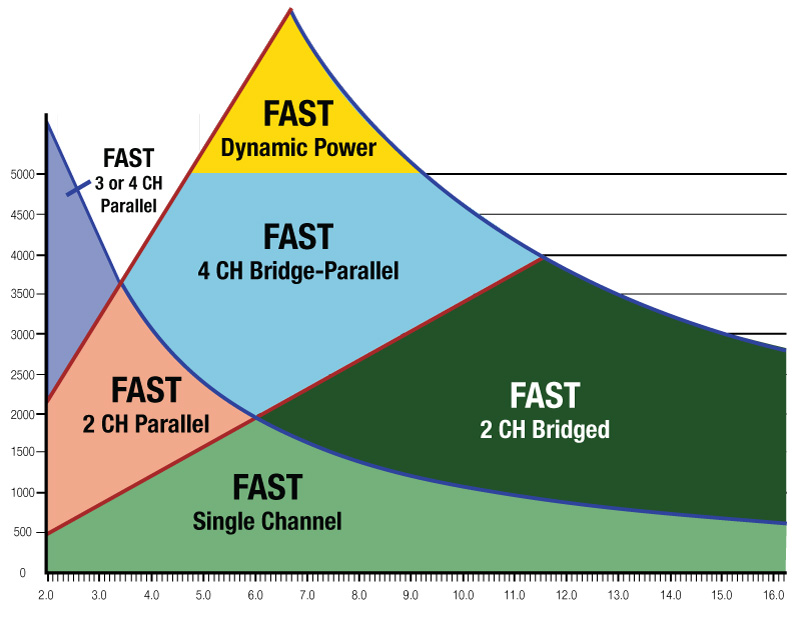Every so often a new technology paradigm comes along that causes you to forget everything you know, and eventually changes the way you specify or design systems.
A few years ago, QSC introduced a new platform of four-channel DSP power amplifiers, available in three flavors – PLD Series for live sound, CXD Series for install sound, and DPA Series for cinema sound. They offer:
- 4th generation PowerLight switching power supply
- Power Factor Correction (PFC)
- Built-in DSP for loudspeaker processing
- QSC’s third generation Class-D topology
- Most importantly, a unique technology that we proudly refer to as FAST (Flexible Amplifier Summing Technology™). FAST is one of those monumental paradigm shifts for amplifier bridging that hit the big reset switch on industry thinking.
Understanding FAST Requires Understanding Ohms Law
Power (in watts) equals voltage squared divided by resistance (or in this case the loudspeaker’s impedance which changes with frequency and temperature). Traditional amplifiers have always been designed by manipulating the current and voltage limits to provide highest power at 2 ohms without bridging. This allows the manufacturer to boast a high power rating at 2 ohms.
When bridging the amplifier, you are effectively doubling the voltage; however, the current limit remains the same. Because the most current is required at lower impedances, where heat is a real concern, doubling voltage only really benefits the user when using a 4 ohm load or higher. This is why you never see a 2 ohm bridged rating on a spec sheet.
QSC’s new generation of FAST amplifier offer both types – “Country and Western”, ooops, I mean “Bridge and Parallel”. Unlike traditional amplifiers which are designed to deliver the highest single channel power at 2 ohms, these FAST amplifiers are designed to deliver the highest single channel power at 6 ohms (halfway between 4 and 8 ohms). This allows the amplifier to operate in both Bridge and Parallel modes.
So What is the Difference Between Bridge and Parallel?
 The best way to understand the difference is to use an AA battery analogy. When two batteries are wired end-to-end and connected to a lightbulb they are now in series (2x the voltage) and as a result the lightbulb will glow brighter. This is the equivalent of bridging a traditional power amplifier. When the same 2x batteries are wired side by side, they are now in parallel (2x the current), and although the bulb will not glow brighter, you can now connect more bulbs to the circuit. This is the equivalent of paralleling amplifier channels, because at low impedances there is already plenty of voltage available, having more current is what actually gives you higher power to drive more loudspeakers on the circuit.
The best way to understand the difference is to use an AA battery analogy. When two batteries are wired end-to-end and connected to a lightbulb they are now in series (2x the voltage) and as a result the lightbulb will glow brighter. This is the equivalent of bridging a traditional power amplifier. When the same 2x batteries are wired side by side, they are now in parallel (2x the current), and although the bulb will not glow brighter, you can now connect more bulbs to the circuit. This is the equivalent of paralleling amplifier channels, because at low impedances there is already plenty of voltage available, having more current is what actually gives you higher power to drive more loudspeakers on the circuit.
Using FAST, bridging two channels will give you greater power optimized for higher impedances (8-16 ohms). HOWEVER, paralleling two channels will give you greater power optimized for lower impedances (2-4 ohms).
And that’s not all, FAST amplifiers also offer the ability to combine three (or even four) channels into parallel mode to achieve ridiculously high current at low impedances (1-2 ohms). And for that super mono-block, you can even bridge-parallel all four channels to achieve 8000 watts of dynamic power optimized for a 4-8 ohm load.
So this begs the question, if parallel mode offers greater power compared to bridge mode at these lower impedances, then why doesn’t everyone do it? The answer is quite simple – it’s really hard to design! That’s why QSC has the best engineers in the industry – they actually figured it out!
Flexible Amplifier Summing Technology. It’s pretty cool stuff!
David Fuller
Latest posts by David Fuller (see all)
- The contrasting personalities of BGM and FGM - May 25, 2018
- Throw This - December 11, 2017
- FAST (Flexible Amplifier Summing Technology) - August 23, 2016





Thanks for the great reminder! It’s one of the things I need to remember as I go back and add layers to my first draft.
The best way to understand the difference is to use an AA battery analogy.